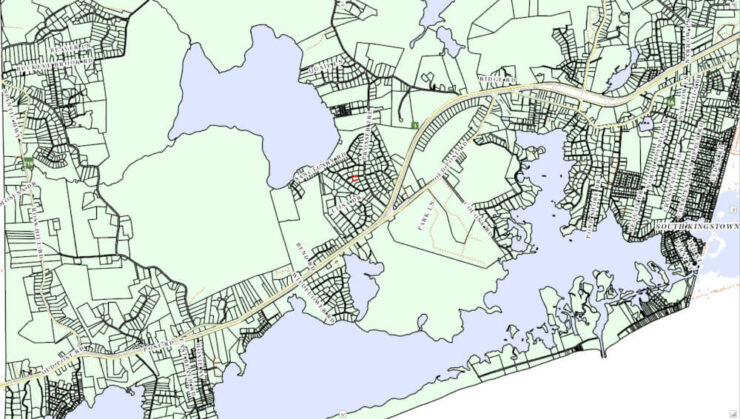Charlestown Has Grown 11 Times Faster Than The State Yet The State Says We Must Grow Faster
Rhode Island’s shortage of housing that is affordable is blamed on decades of insufficient home construction. While that may be true generally for the state, home construction has proceeded apace in Charlestown.
Between 1970 and 2020, Rhode Island’s population grew from 946,725 to 1,097,379 – a 15.9% increase in population. In those same decades, Charlestown’s population grew from 2,863 to 7,997 – a 179% increase.
Charlestown’s year-round population has nearly tripled in a period when the state, as a whole, has had negligible growth. We have grown more than 11 times faster than the state.
Charlestown’s census numbers, however, underestimate our growth by not considering the large number of dwelling units occupied by non-residents or used for short-term tourist rentals and where the occupants are not counted in the census.
In recent years houses were built at a rate that is much faster than that revealed through census numbers. From 2010 to 2023, 357 new homes were built in Charlestown. However, those 357 new dwellings barely register in the census data as many are consumed for non-resident use. An additional 54 new house lots were approved in 2023 and have not been built yet; the majority are likely to be second homes.
Charlestown does not have public sewer and water. The home construction rates since 1970 have led to pollution of our coastal ponds, groundwater pollution that is causing dangerously high nitrogen levels in some of our drinking water, and negative impacts on coastal buffers, freshwater ponds, wetlands, forest habitats, and our Wild and Scenic Pawcatuck River. These growth rates are not environmentally sustainable, yet we are forced by state legislation and by actions of our Town Council to grow even faster.
Charlestown is within 3 hours of over 25 million people. This short distance has historically been important for tourism, but now with the acceptance of remote work, it is easy for people with high-paying jobs in the surrounding large metropolitan areas to live all or most of the year in Charlestown.
The supply of affluent people willing to pay high prices for homes and short or long-term rentals will consume any increase in housing production. In this market, only dwellings that are permanently protected with deed restrictions that require that the dwellings are priced for and occupied by those of moderate affluence will be affordable.
Accelerating the rate of growth of market-rate units will have an impact, but that impact won’t be to produce affordable housing, especially in coastal areas.

You can learn more about the author, Ruth Platner, on her profile page.
The banner image is a map of current lot lines from north of Buckeye Brook Road to Ninigret Pond. The largest areas without lot lines include Burlingame State Park and campground, Narragansett Tribal Land, Ninigret Park and Ninigret National Wildlife Refuge, developed land where lots have not yet been recorded, and large gravel operations.

March 5, 2024 @ 1:42 pm
I understand that there are houses in Charlestown whose market value is within the “affordable” range but that cannot be counted as “affordable” because they are not “deeded’. Why can’t the owners of these houses be allowed to sell their rights to future market values so that the houses can then become “deeded”.
March 3, 2024 @ 9:33 am
The grasshopper and the ant. One did not live up to its responsibilities while the other worked diligently to preserve its environment. Now the grasshopper state tries to take what the ant town worked so hard to maintain, and because it is bigger and stronger, the ant has to back down and give up its rights to its property. An Aesop’s fable come to life.
How much unused building space do Providence, Pawtucket, Warwick, Cranston, East Providence, and Woonsocket have? Considerable! From just driving through those areas, you can see that Charlestown and the other rural communities are being politically pressured. We have just the right people at the State and local levels that will knuckle under in order to solve the State’s problem. Does Charlestown have an immediate housing shortage? Not really, but we are going to become the pressure release valve for the General Assembly, who are beholding to the construction lobbyists.